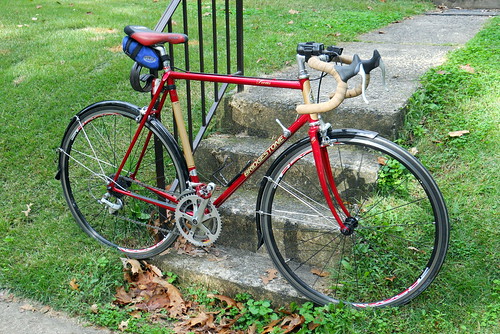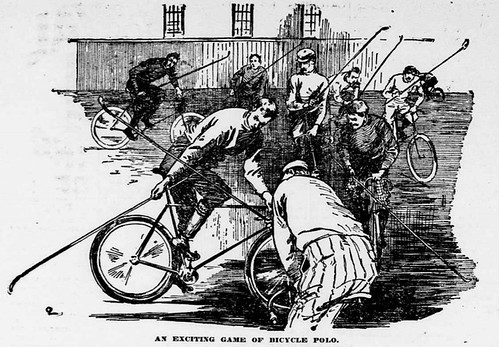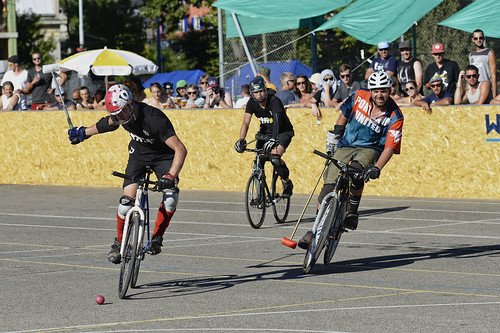 Racing Through the Dark
Racing Through the Dark by
David Millar
My rating:
2 of 5 stars
Because of all the Lance Armstrong related hubbub I have not reviewed this because I thought I should do something more than just review this one book, but better to do something than nothing.
Many people who are not cycling enthusiasts will not know who David Millar is - there is a
Wikipedia article that provides a lengthy overview. (Arguably it is a wiser time investment to read what is in Wikipedia than the book.)
Millar rode for several teams and was someone from whom success was expected not long after turning professional, then in 2004 he was caught doping and sat out two years. In 2006 he returned to riding as a vocal advocate for riding clean.
This memoir that clocks in at close to 350 pages has four parts: childhood through youth and early riding career, then his progressive conversion to doping followed by his being caught and banned for two years, and finally his reborn career and stance as anti-doping advocate.
The first section is too long - there is no compelling reason to have included most of what is here since little of it provides any background or explanation for what follows. Simply starting to read at page 58 or skimming up to this point would be a way of avoiding most of the pointless reading.
The second section - his professional career from 1997 through 2004 - is the most interesting part of the book. I have not read Tyler Hamilton's new book but I would guess it is similar. Millar avoids taking direct responsibility for his actions explicitly and offers a variety of excuses, including "it was expected," "the other guys were depending on me," "what I did at first wasn't doping, it is easy to slide over the line into doping" and more.
The description of his life as a cyclist and his fellow riders during this period reveals that things were quite bad - one wonders that something didn't set off a reaction then, long before Lance was busted. Riders didn't just take things to perform better during the race, they took various things to recover faster and took sleep aids as well. At one point Millar took a sleep aid while drinking (despite knowing this was unwise) and jumped from a window injuring an ankle and then not being able to ride for months.
The drinking aspect was not something I expected as apart of the story - for a professional athlete, Millar drank quite a lot. In only one photograph in the book where he was not on a bike is he not holding a drink. I suppose one can give him credit for being open about this.
The third section of the book is about being busted and serving a two year ban from riding. Millar is suitably grateful to folks who saw him through this period but in places he is whiny - given that he is a professional athlete who would drink, take pills, then injure himself it's kind of hard to feel sorry for him. He also moans and groans about his personal financial difficulties, the details of which I forgot about the instant I finished reading about them - given how much this subject may have occupied his attention during this period he likely thinks he kept description of this short, but it seemed labored to me.
The last section is the redemption section - as with many memoirs written by athletes who are still active, he doesn't want to annoy his new teammates so this is not terribly revealing (or interesting).
He makes an exception for his former teammate Bradley Wiggins who left Garmin-Slipstream for Team Sky. Millar describes his unhappiness at this (in large part, he says, because he took a pay cut so that Wiggins could earn more) and shares that he and his teammates regarded Wiggins' chances to win the Tour de France, his goal, as slim. "We looked forward to watching him fail" and "we were certain that he'd never be on the podium at the Tour." (Work on this book was completed long before the 2012 Tour de France that Wiggins won.)
Lance Armstrong comes up twice - early in his career he and Lance were both riders for Cofidis, although they didn't have that much contact since Armstrong was just coming back after cancer treatment. Much later, after the doping suspension, Millar lectured Lance at a cocktail party and Millar describes that incident in some detail. Otherwise what one gets relative to Armstrong's situation is confirmation that the culture of doping was widespread, pervasive.
The issue of doping overshadows the subject of bicycle road racing in this memoir, which is unfortunate. From time to time Millar does provide descriptions and analysis of some of his races and racing accomplishments but this comes across as a secondary topic. Millar had a number of big races where he just failed to win and much like his excuse-making with doping, he usually offers excuses for those failures. (As a memoir written with a co-author it seems remarkable that in numerous places a reader forms a less than good impression of Millar - not that he was doping, that he makes excuses and doesn't take responsibility for it more directly, and like that.)
In the 338 pages here there is around 120 pages of interesting stuff. There are some photos, both color and black and white. There is an index that can help you what what he may have said about particular people or events without plowing through all if it but no timeline for Millar's career, which would have been helpful. (You can look up his
professional career accomplishments.)
View all my reviews






